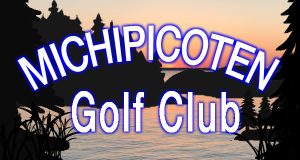The largest remaining privately owned island in Lake Superior is now permanently protected, marking a significant win for nature in Ontario. Thanks to an ambitious campaign by the Nature Conservancy of Canada (NCC) and the steadfast support of many community partners, donors and foundations, the 2,076-hectare Batchewana Island will now remain a permanent haven for wildlife, birds and fish.
Batchewana Island is located in the Lake Superior natural area. Lake Superior is unique among the world’s freshwater lakes; situated at the top of the Great Lakes, it is the world’s largest freshwater lake by area. Batchewana Island’s incredible beauty and its proximity to Sault Ste. Marie means the island has faced increasing development pressures in recent years. However, a strong group of community supporters and conservation partners stepped up efforts to ensure its protection. Local people mobilized to help NCC secure the property by donating toward the island’s protection, and they are now partnering with the organization to care for the island and its species. Nature enthusiasts are eagerly completing species inventories for NCC, contributing to the organization’s knowledge of biodiversity on the island. NCC sincerely thanks the community for helping protect and care for Batchewana Island.
Batchewana Island is part of the traditional territory of Batchewana First Nation and is located north of Sault Ste. Marie in Batchawana Bay. The island boasts 27 kilometres of undeveloped shoreline as well as intact forests and wetlands. These forests and wetlands are a prime location for more than 75 bird species, 30 of which are provincially significant and four are species at risk, such as rusty blackbird (special concern), bald eagle (special concern) and Canada warbler (special concern). The island is also home to several wide-ranging mammals such as black bear, Canada lynx, gray wolf and moose. The waters of the surrounding bay provide important habitat for freshwater fish, such as at-risk lake sturgeon. The island’s forests and wetlands absorb carbon, helping to lessen the impacts of climate change.
This project was made possible with the support of many private donors and foundations. Contributions were also made by the Government of Canada, through the Nature Smart Climate Solutions Fund, and the Government of Ontario, through the Greenlands Conservation Partnership program.
This project showcases how NCC is accelerating the pace of conservation in Canada. In the past two years alone, NCC has influenced the protection of more than one million hectares (almost twice the size of Prince Edward Island), coast to coast to coast. Over the next few years, the organization will double its impact by mobilizing people and delivering permanent, large-scale conservation.
In the face of rapid biodiversity loss and climate change, nature is our ally. There is no solution to either without nature conservation. When nature thrives, we all thrive.
- Ladies Night Golf – July 24, 2024 - July 26, 2024
- Red Pine Confirms Independent Sampling and Assaying - July 24, 2024
- Men’s Night Golf – July 18 - July 20, 2024
 Wawa-news.com You can't hear the 'big picture'!
Wawa-news.com You can't hear the 'big picture'!

